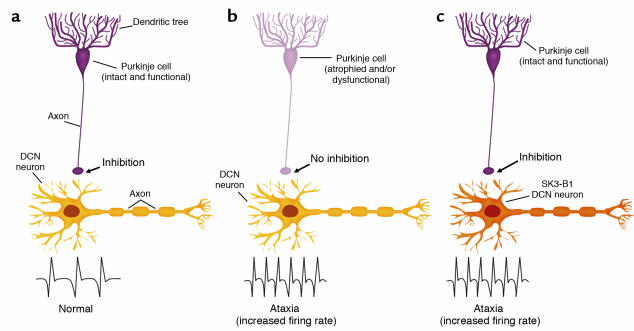Figure 1.
SK3-B1 mice demonstrate a direct relationship between DCN firing rate and proper movement control. In the normal state (a), Purkinje cells in the cerebellar cortex provide an inhibitory signal to DCN neurons, which, in conjunction with other pathways into the DCN, results in a normal DCN firing rate and proper motor control. In cerebellar ataxia (b), the inhibitory signal to the DCN neurons from Purkinje cells is compromised. This lack of a proper inhibition was suggested to result in an increased firing rate of DCN neurons, leading to ataxia. (c) The direct relationship between increased DCN firing rate and ataxia was demonstrated by Shakkottai et al. (4). When the SK inhibitor SK3-B1 was expressed in DCN neurons, those neurons had an increased firing rate and the transgenic mice were ataxic. Importantly, the Purkinje cell input into the DCN remained intact in the SK3-B1 mice.

